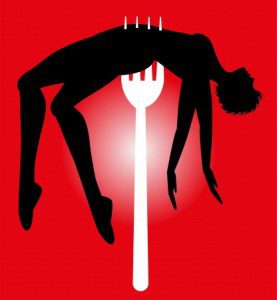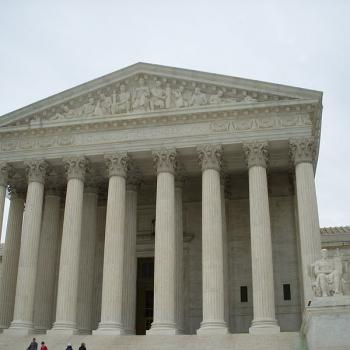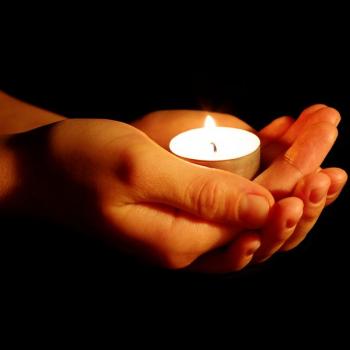Today I have been working on explaining and documenting the history of misogyny and patriarchy in the church as backdrop for understanding the contemporary debate about abortion in the US.
Not only is navigating the history of misogyny exhausting, it’s given me a headache too!
I think it is easy for many Christians to forget how misogynist our tradition has been. Particularly if we worship in communities that accept women pastors and lay leaders.
Misogyny is defined as the “hatred of women.” It’s a pretty bold claim to say that there are elements of our history and our culture that actively express a “hatred” of women. Many people find that language too extreme and would prefer “softer” language – discrimination, prejudice, condescension, disregard, perhaps even objectification (seeing women as sexual objects rather than as fully human equals).
The thing is, throughout history many historians, philosophers, political leaders, and prominent theologians have treated women is demeaning and abusive ways. There is nothing “soft” about the sentiments expressed by many male philosophers and theologians. Nor is there anything “soft” about the social control of women that often accompanies misogynist and patriarchal attitudes.
Here are some of the texts I’ve been working with today:
Tertullian (early 3rd c. CE) – You are the Devil’s gateway. It is you who plucked the fruit of the forbidden tree. You are the first who deserted the divine law. You are the one who persuaded him whom even the Devil was not strong enough to attack. All too easily you destroyed the image of God, man. Because of your desert, that is death, even the Son of God had to die. . .
Augustine (late 4th – early 5th c. CE) – The woman does not possess the image of god in herself, but only when taken together with the male who is her head, so that the whole substance is one image. But when she is assigned as a helpmate, a function that pertains to her alone, then she is not the image of God. But as far as the man is concerned, he is by himself alone the image of God, just as fully and completely as when he and the woman are joined together into one.
Barth (early 20th c. CE) – The covenant creation dictates a certain order, a relation of priority and posteriority, of A and B. Just as God rules over creation in the covenant of creation, so man rules over woman. He must be A; he must be first. She is B; she must be second. He must stay in his place. She must stay in hers. She must accept this order as the right nature of things through which she is saved, even if she is abused and wronged by the man.
I use these quotes when I teach my students about the misogyny that is embedded in the development, history, and theology of Christianity. These quotes unambiguously establish women as not only inferior to men and removed from God but as the very “Devil’s Gateway.” It seems pretty clear that these men did not think much of women. These statements even seem to be a little “hatey,” don’t you think?
These kinds of ideas – that women are the root of sin and evil, that women must be subservient to their husbands, that women must accept our inferior status in life – all of these ideas are rightly understood as part of a misogynist tradition in Christianity, a tradition that has contributed to larger social attitudes and behaviors in society that collectively express a fairly serious “hatred” of women.
Unfortunately, these misogynist attitudes are not just a part of Christian history, they continue to function in influential ways in contemporary Christianity.
I recently wrote about the offensive ideas about women that some Orthodox Christians hold in the ecumenical movement. But misogynist ideas about women, women’s social roles, and women’s leadership in the church are also alive and well in conservative and some evangelical circles too.
Controversial pastor Mark Driscoll who started the mega church Mars Hill in Seattle said this about women, “Women will be saved by going back to that role that God has chosen for them. Ladies, if the hair on the back of your neck stands up it is because you are fighting your role in the scripture.”
And, of course, who can forget the Pat Robertson gem from 1992, “The feminist agenda is not about equal rights for women. It is about a socialist, anti-family political movement that encourages women to leave their husbands, kill their children, practice witchcraft, destroy capitalism and become lesbians.”
WOW! He really has no idea what feminism is about does he?
While misogyny is deeply embedded in the development, history, and theology of Christianity, this does not mean that Christianity is inherently misogynist or patriarchal. It is human beings who shape attitudes and beliefs about human nature, the sacred, and our religions through our teachings and our practices. And it is human beings who have created patriarchal church structures and misogynist theologies. The real danger of these misogynist theologies lies in the way that they shape attitudes about women and the way that women can (and even should) be treated.
Another way in which this hatred of women has manifested in our society is in the double-standard that exists between expectations about men and women’s sexual behavior. While some churches may preach against sex before marriage, it is only women who are truly expected to comply. Women who have sex outside of marriage are labeled in many ways – whore, promiscuous, slut, tramp, harlot, strumpet, bimbo, floozy, hussy, tart, trollop, jezebel, and referred to as “loose” or “fallen.” We do not have parallel words for men.
Because Christianity has played an important role in shaping cultural attitudes about pregnancy, abortion, and the sacredness of life (among other things), it is important to recognize the ways in which the Christian tradition and its theological ideals have been influenced by misogyny and patriarchy so that we can reshape our beliefs and practices to recognize women’s full humanity, women’s moral agency, and the fact that women are equally loved by God.
image Copyright: <a href=’http://www.123rf.com/profile_passiflora70′>passiflora70 / 123RF Stock Photo</a>













